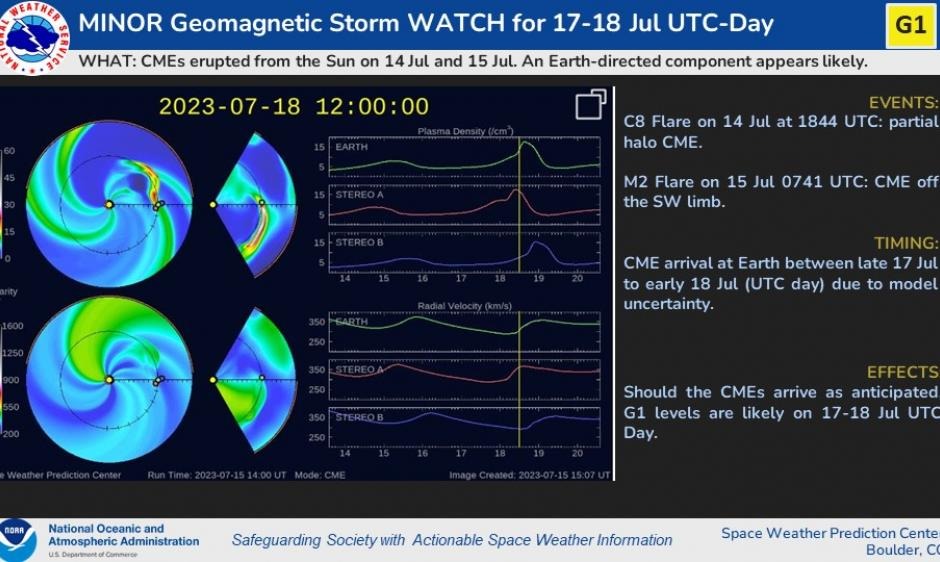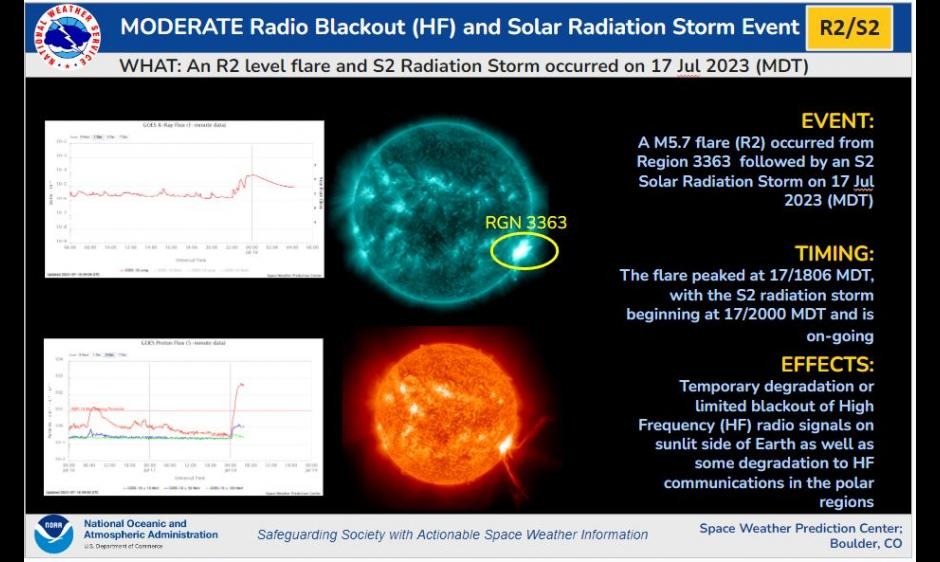Earth may see ‘minor’ geomagnetic storm from recent powerful solar flares: NOAA
US authorities have issued a minor geomagnetic storm watch for the planet as scientists observed powerful flares on the sun over the weekend.
The US Space Weather Prediction Center said the storm may hit Tuesday as it issued the “G1” storm watch on Sunday.
A geomagnetic storm occurs when there is an exchange of energy from the solar wind into the space environment surrounding Earth, disrupting its magnetosphere, according to the center, which is a part of the National Oceanic and Atmospheric Administration.
The storms can create beautiful aurora but also have the ability to disrupt radio signals and navigation systems and create harmful geomagnetic-induced currents in the power grid and pipelines, the administration said.
The center tracked two solar flares on Friday and Saturday, which indicates that coronal mass ejections — large cloud-like expulsions of plasma and magnetic field from the sun’s corona — are expected to reach Earth by Tuesday.
The ejections’ landfall would then cause the geomagnetic storm, which is often experienced as a rapid drop in Earth’s magnetic field strength.


The dip in magnetic power typically lasts between six and 12 hours and can cause damage to satellites and communication devices, according to NASA.
Russian scientists also tracked solar flares over the weekend.
The Fedorov Institute of Applied Geophysics in Moscow said X-class flares — the largest explosions in the solar systems — were possible. The X-class flares can create long-lasting radiation storms.
With Post wires
Read the full article Here


